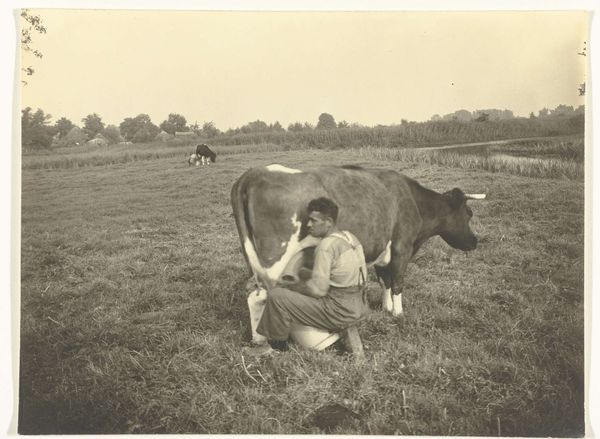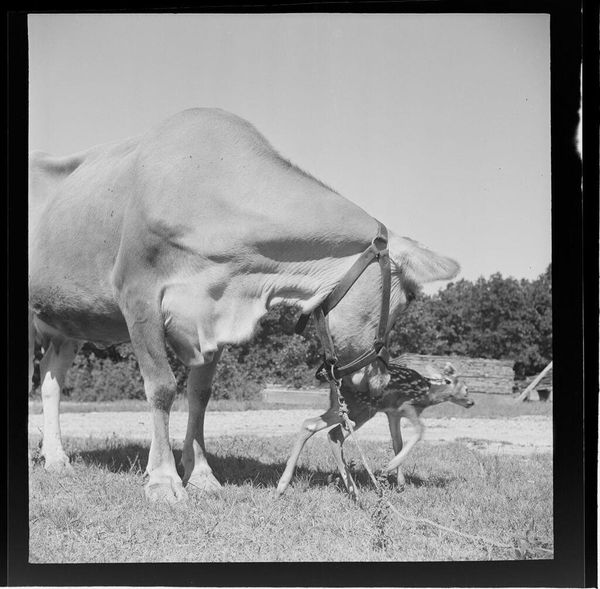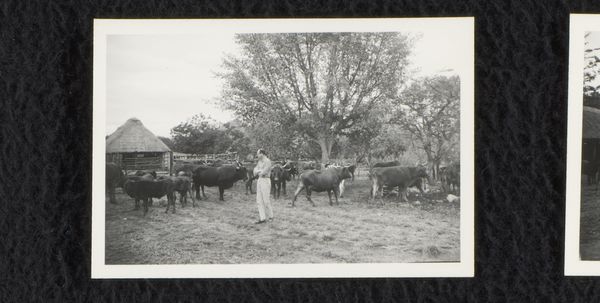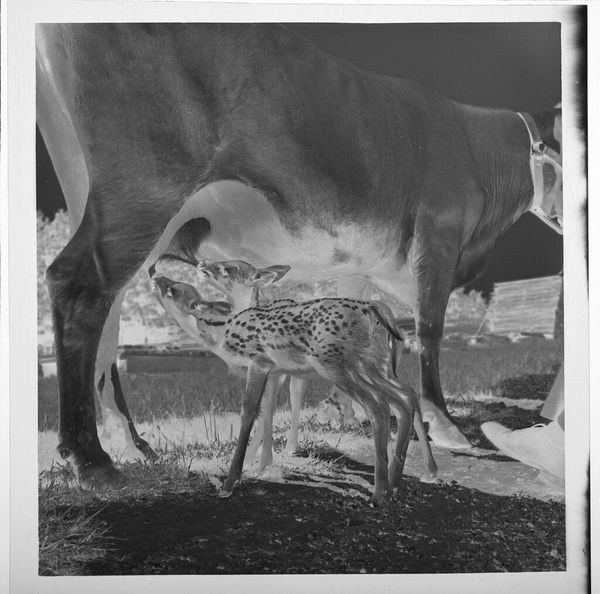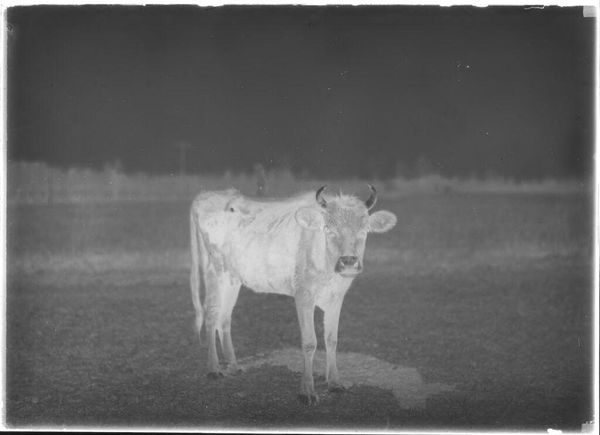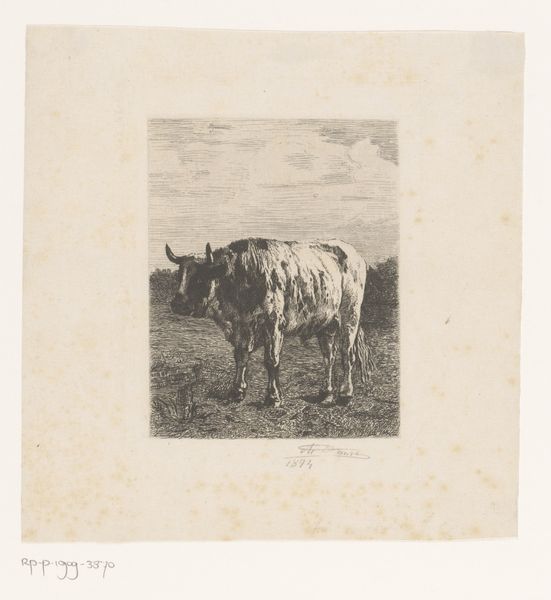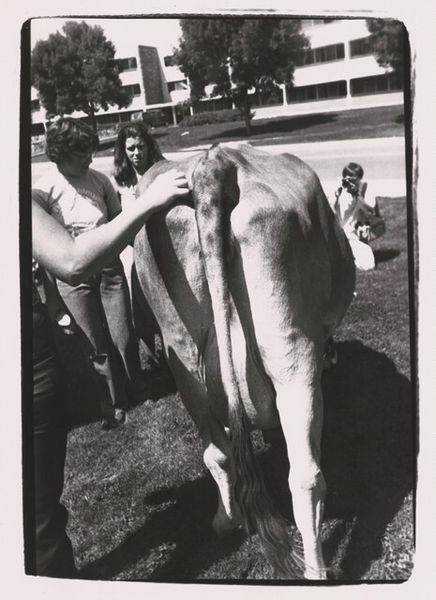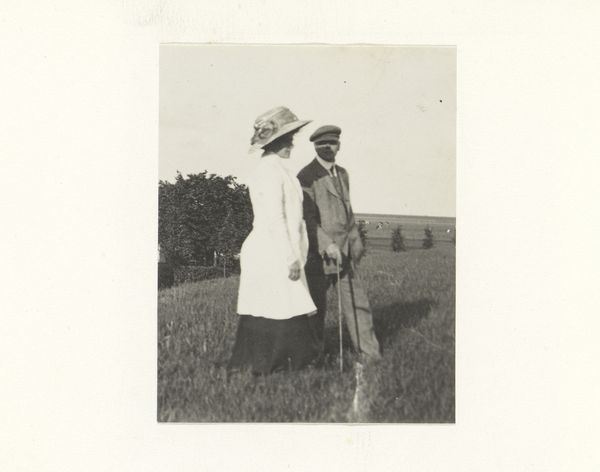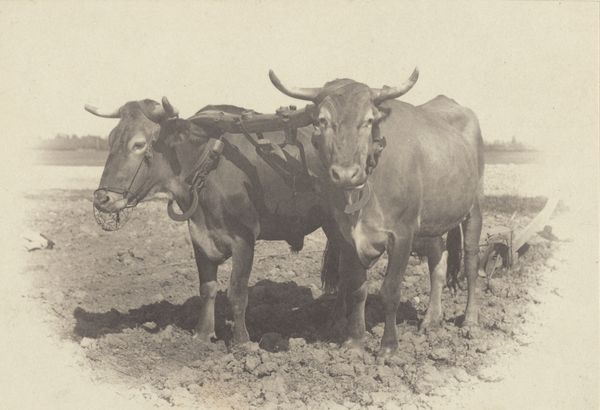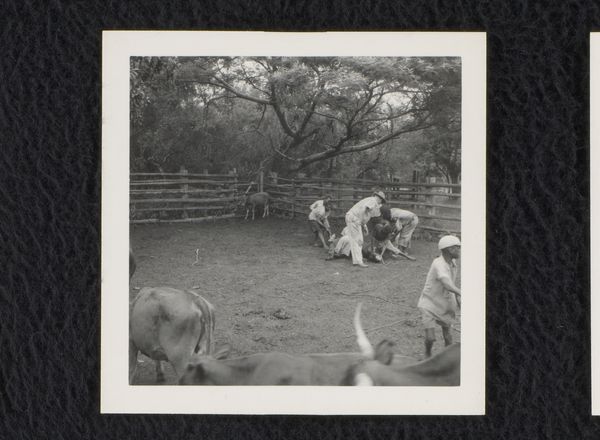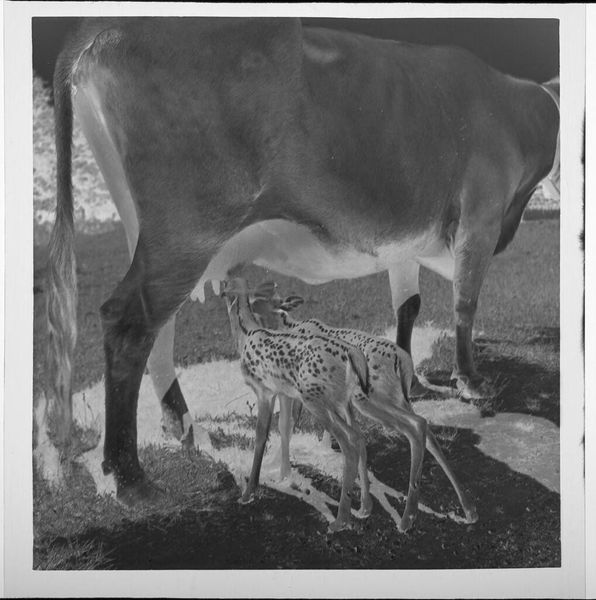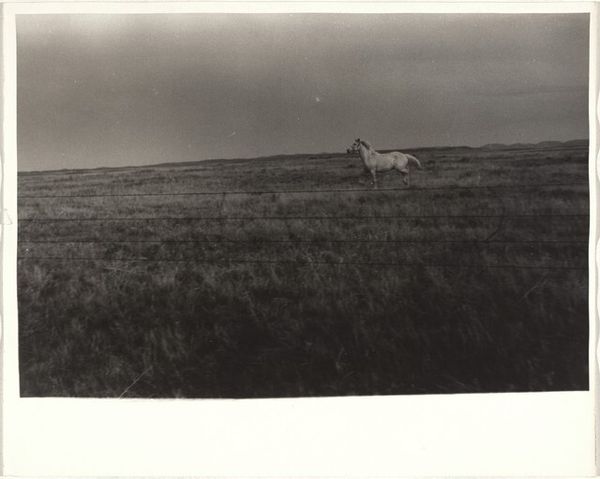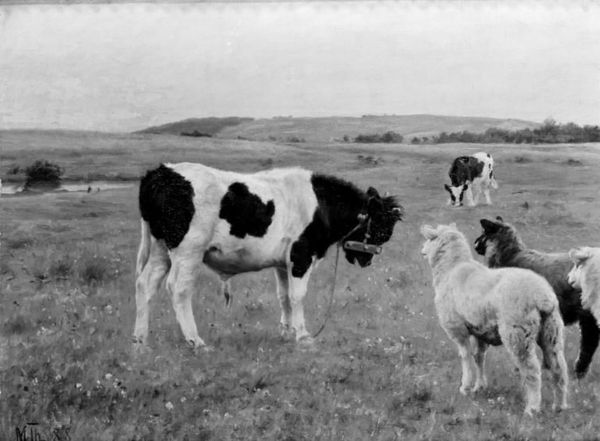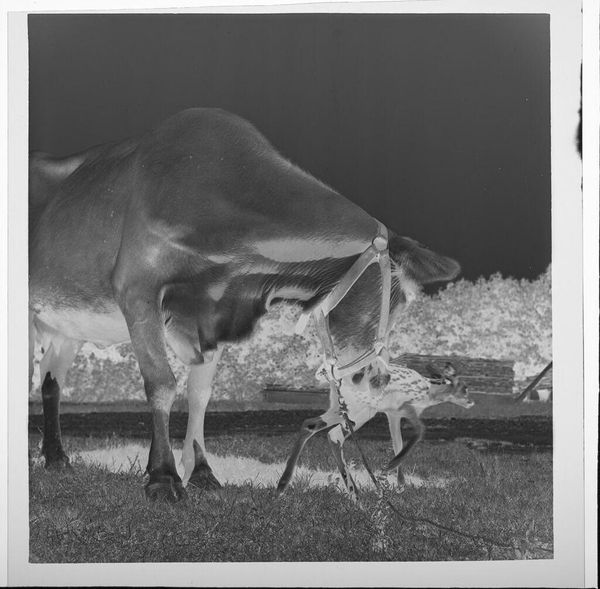
photography
#
portrait
#
print photography
#
landscape
#
street-photography
#
photography
Dimensions: image: 7.8 x 8 cm (3 1/16 x 3 1/8 in.) sheet: 8.8 x 8.9 cm (3 7/16 x 3 1/2 in.)
Copyright: National Gallery of Art: CC0 1.0
Editor: Here we have a photograph titled "Hazel Bauer," created around the 1960s. It shows a woman, presumably Hazel, alongside a cow in a field. The scene feels very ordinary, almost banal. What narratives do you see in this piece? Curator: This image invites us to consider several intertwined themes. Firstly, its seeming "ordinariness" challenges the art historical canon, traditionally focused on elevated subjects. The photograph’s strength lies in its ability to bring visibility to everyday lives, particularly that of a woman, perhaps a farmer, positioned outside urban centers. How might we read Hazel Bauer's attire—that patterned top and skirt—within the context of 1960s fashion and its relationship to social identity? Editor: I hadn't thought about the clothing. It seems quite vibrant against the muted landscape. Curator: Exactly. The color and pattern create a sense of individuality and even resistance against the potentially homogenizing forces of rural life. And what about the cow? Animal rights and factory farming weren't as widely discussed then as they are today. So, how does the cow's presence shift our reading of the image within our contemporary awareness of the ethics of animal treatment? Editor: That’s a heavy question! The cow appears quite nonchalant. But positioning the work today definitely impacts my interpretation of its themes. Curator: This photograph allows us to look at historical shifts in consciousness. It prompts consideration of how representation is always a politically charged act. Who is being represented, how, and by whom, are critical questions that speak directly to issues of power, visibility, and social justice. And ultimately, how does this single snapshot engage us to see connections across seemingly disparate aspects of rural life and the modern gaze? Editor: Seeing how one image holds such a diverse array of concepts is amazing. It makes me appreciate art's relationship to culture even more. Curator: Indeed! It highlights the power of art to be a lens through which we can critically examine our world and the power dynamics that shape our lived experiences.
Comments
No comments
Be the first to comment and join the conversation on the ultimate creative platform.
